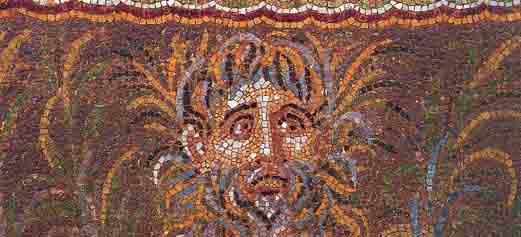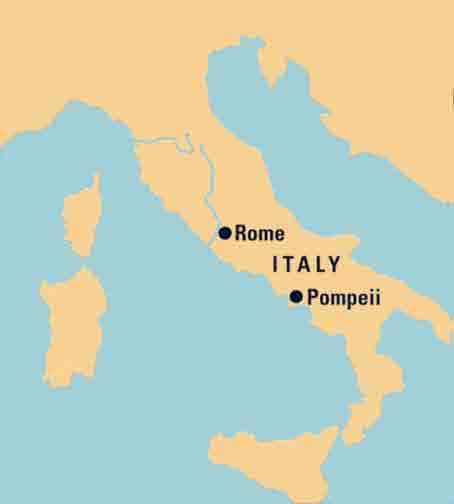

With his mouth agape and eyebrows raised in a pained expression, the Greek god Oceanus, depicted in a Pompeian mosaic dating to the Augustan period (24 B.C.—14 A.D.), appears to be almost afraid of something. Could he have known that Mount Vesuvius would soon erupt, burying Pompeii under layers of sand, stone and mud in 79 A.D.?
Part of a larger tapestry-like mosaic that includes flying swans and intricate border motifs, the representation of Oceanus adorns a fountain at the Casa della Fontana Grande, one of Pompeii’s most splendid mansions, thought to have been the home at one time of a man named Livius. Oceanus, a common subject of Roman artists, guards the fountain’s outlet for water, which trickled down a series of marble steps into the vaulted basin.

Set in one of the house’s two spacious, lighted courtyards, the fountain afforded its owner both convenience and luxury. Privileged Pompeians didn’t have to venture to the city’s 32 public fountains, from which most residents drank. Especially important, the private fountain was also a status symbol: No significant Pompeian household aspiring to keep up with the Caesars was without one.
Already a library member? Log in here.
Institution user? Log in with your IP address.

